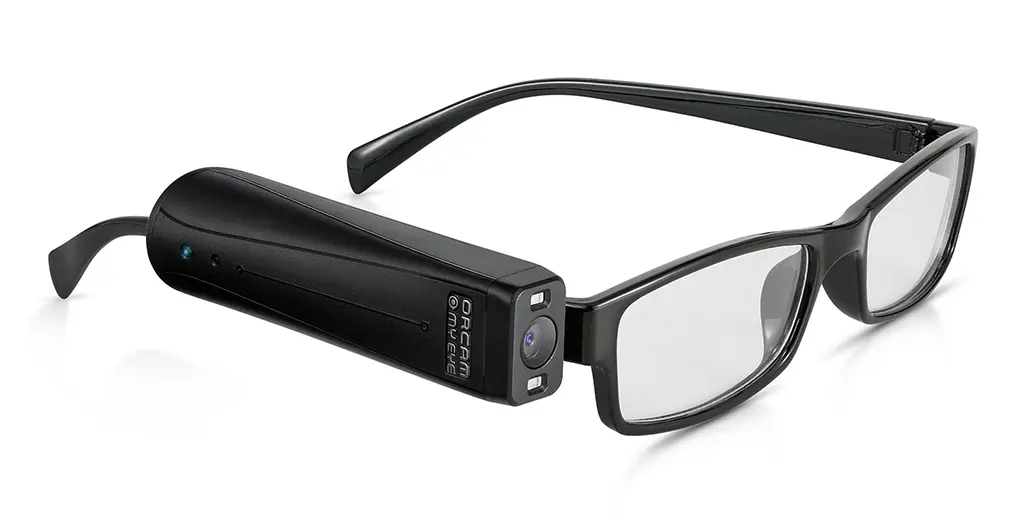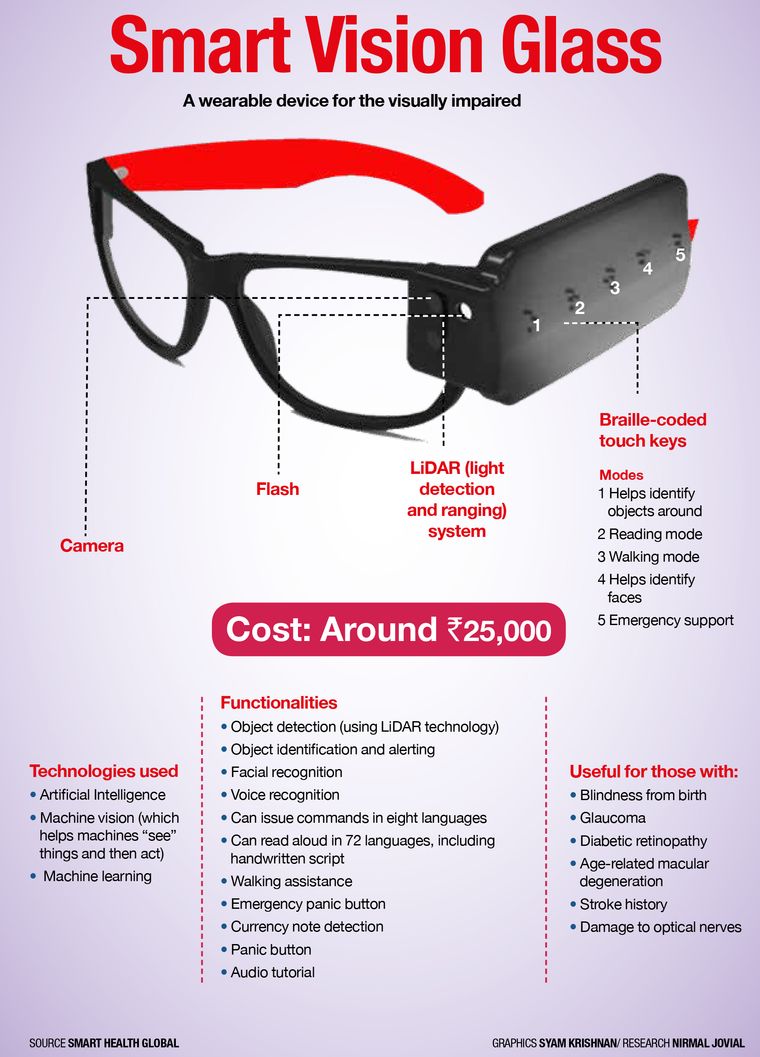Empowering Independence With Assistive Innovation for the Blind
The combination of assistive innovation for people that are blind or aesthetically damaged stands for a significant innovation in cultivating independence and boosting top quality of life. With a variety of tools-- from screen readers to cutting-edge responsive tools-- these modern technologies not only help with navigating and communication but additionally advertise social addition and engagement in numerous elements of life. As we explore the varied types of assistive tools and their real-world applications, it becomes clear that the impact is profound. Yet, the advancement of this innovation elevates crucial inquiries about accessibility and future developments that call for more examination. Assistive technology for the blind.
Comprehending Assistive Technology
Although assistive innovation has actually advanced considerably for many years, its fundamental objective stays the same: to enhance the top quality of life for people with specials needs, specifically those who are blind or aesthetically impaired. This modern technology includes a broad variety of devices and gadgets that assist in independence and performance in everyday tasks.
Assistive technology can be classified right into low-tech and high-tech remedies, each created to meet certain needs. Sophisticated tools usually consist of software program applications, specialized hardware, and adaptive devices that utilize sophisticated modern technology to provide support in numerous contexts. On the other hand, low-tech services might include daily products that are changed to enhance ease of access, such as magnifiers or responsive pens.
The combination of assistive technology into the lives of individuals that are blind or aesthetically impaired not just promotes autonomy yet also fosters social inclusion and participation in instructional and expert environments. By leveraging these modern technologies, individuals can navigate their environments, accessibility details, and interact successfully, thereby improving their general top quality of life. Comprehending assistive innovation is important for caretakers, supporters, and professionals that aim to support individuals in maximizing their possible and accomplishing better freedom.
Kinds of Assistive Gadgets
Assistive gadgets for the blind and aesthetically impaired are essential tools that enhance daily living by attending to particular difficulties come across by users. These devices can be generally categorized into 3 primary types: optical gadgets, digital gadgets, and sensory tools.

Sensory gadgets, such as Braille screens and tactile maps, give alternate ways to obtain information. Braille displays transform electronic text into Braille, allowing individuals to go through touch. Tactile maps provide spatial understanding with raised lines and structures, enabling for far better ecological awareness.
Together, these assistive devices encourage people with aesthetic disabilities to involve more totally with their environments, advertising better freedom and confidence in daily activities.

Impact on Every Day Life
The combination of assistive technology into the lives of people that are aesthetically impaired or blind substantially enhances their capability to interact and navigate with the globe around them. Devices such as display readers, Braille presents, and mobile applications assist in access to info, allowing individuals to involve with digital web content, interact properly, and handle everyday jobs individually.
Moreover, innovations like smart glasses and navigation applications offer real-time support in strange atmospheres, improving mobility and confidence. These devices allow customers to identify barriers, reviewed indicators, and also identify faces, thus fostering a feeling of freedom in public areas. In addition, home automation systems, which can be managed via voice commands, enable individuals to manage their living environments better, my response improving convenience and safety.
The influence of assistive technology prolongs past sensible tasks; it promotes social inclusion and psychological health. By bridging the gap in between people and their surroundings, these technologies equip customers to get involved fully in neighborhood activities, seek instructional chances, and involve in meaningful partnerships. Inevitably, the innovation of assistive technology contributes in redefining the possibilities for people that are aesthetically impaired or blind, resulting in a much more accessible and comprehensive culture.
Success Stories and Reviews

One more effective testimonial comes from Mark, a recent university grad who utilized screen reading software application throughout his academic journey. This technology enabled him to access program materials and join discussions, inevitably leading to his successful transition into the workforce. Mark credits assistive technology for empowering him to accomplish his occupation goals, emphasizing its role in leveling the playing area for individuals with aesthetic problems.
Additionally, neighborhood centers have actually reported raised involvement in their programs many thanks to the introduction of obtainable electronic systems. These he has a good point systems have made it less complicated for individuals to attach, share sources, and support each other. These success tales jointly emphasize the extensive result of assistive technology in cultivating independence, enhancing top quality of life, and damaging down barriers for the visually damaged and blind neighborhood.
Future Patterns in Assistive Technology
Emerging innovations are poised to revolutionize the landscape of assistive tech for people who are visually damaged or blind. Technologies in fabricated knowledge (AI) and artificial intelligence are boosting the capacities of gadgets, allowing more instinctive user experiences. AI-driven applications are progressively able to read and acknowledge things text out loud in real-time, offering customers with useful information concerning their surroundings.
Furthermore, advancements in wearable technology are creating new possibilities for freedom. Smart glasses furnished with increased fact attributes can overlay critical details onto the customer's field of view, helping with navigating and interaction with the setting. The combination of Internet of Points (IoT) tools is streamlining ease of access in smart homes, allowing users to regulate devices and receive notifications through voice commands or tactile user interfaces.
The development of braille display screens and tactile feedback systems is also on the increase, promoting access to electronic web content and improving communication. As these innovations remain to evolve, they promise to enhance everyday living, instructional chances, and work potential customers for people with aesthetic disabilities. Continuous collaboration in between engineers, users, and advocacy groups will be essential in guaranteeing these technologies satisfy the demands of the community successfully.
Verdict
Finally, assistive technology plays a crucial duty in improving the freedom of individuals who are blind or visually damaged. By supplying important devices and sources, these technologies promote enhanced interaction, navigation, and gain access to to details, therefore fostering autonomy and positive self-image. The transformative influence of assistive tools not just advertises reliable communication with the setting yet also motivates social addition and involvement in numerous elements of life, inevitably encouraging individuals to thrive within their neighborhoods.
The integration of assistive innovation for visit here individuals that are visually impaired or blind stands for a substantial development in promoting self-reliance and enhancing high quality of life.The assimilation of assistive technology into the lives of people that are blind or aesthetically impaired not only promotes freedom but also promotes social inclusion and engagement in professional and academic settings. Eventually, the improvement of assistive technology is important in redefining the possibilities for people who are blind or aesthetically impaired, leading to an extra accessible and comprehensive society.
Many individuals who are aesthetically impaired or blind have shared motivating success stories that highlight the transformative effect of assistive modern technology on their lives.In conclusion, assistive modern technology plays a crucial role in improving the freedom of individuals that are visually impaired or blind.